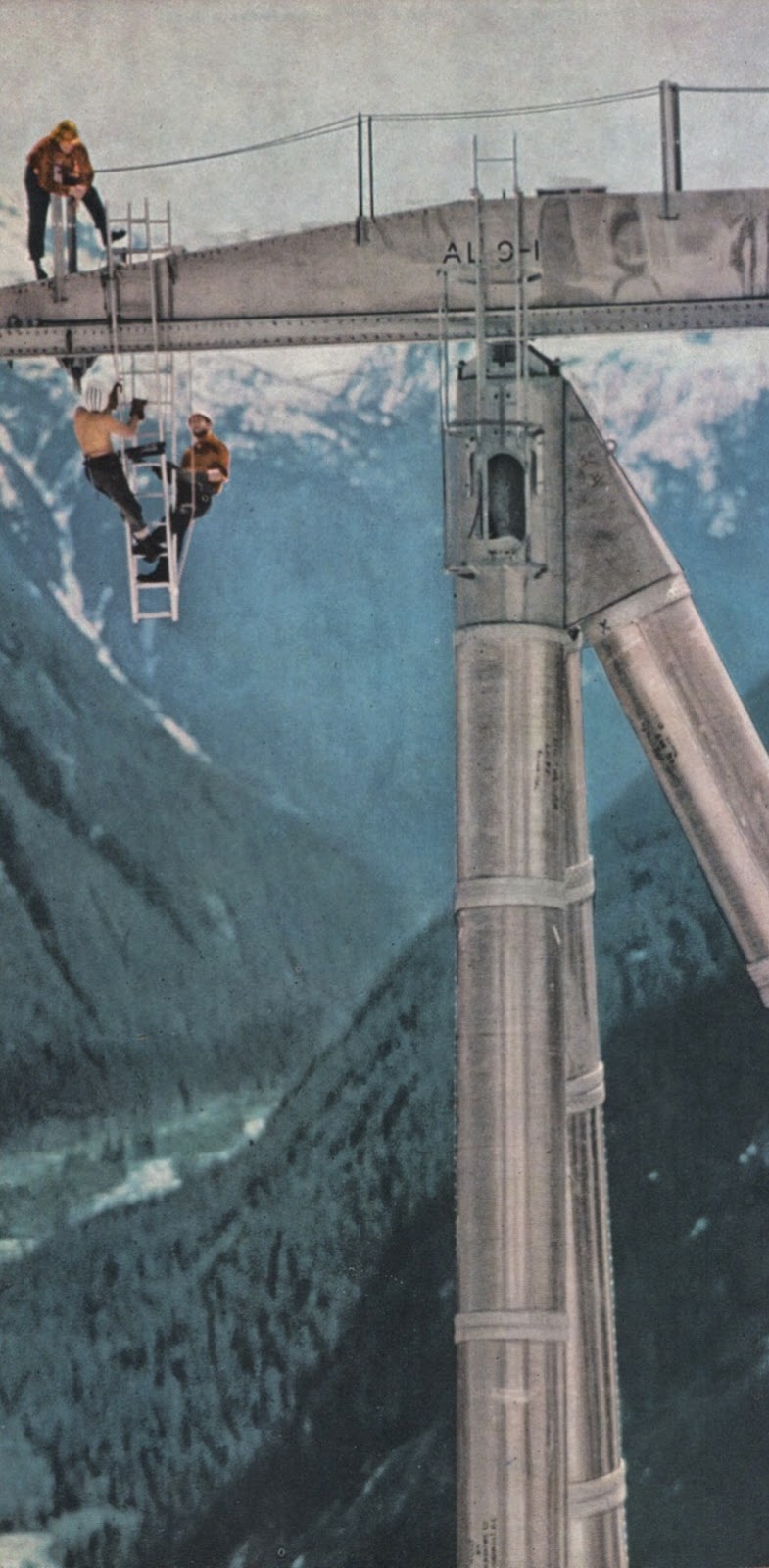No Place in Heaven
Laura Warren
Toronto: News Stand Library, 1949
News Stand Library flogged No Place in Heaven as a scandalous memoir, but I think it's a work of fiction. Somehow I can't bring myself to believe that the manuscript of a repentant, dying woman ended up with a crooked, fly-by-night Toronto paperback publisher.
Laura Warren (née Fletcher) looks back on life from her deathbed, beginning with the miracle of her birth, not six months after her parents' marriage. Ma and Pa, vaudeville performers both, shoot for Hollywood stardom, but lose a race with a locomotive. Baby Laura is left to be raised by her Aunt Bessie who runs a New York rooming house catering to artistic types.
"Living in Aunt Bessie's rooming house [sic] was like taking the vow of chastity and then moving into the YMCA", says Laura. "You took a chance just bending over to pick up a bar of soap." It's a little hard to imagine our heroine growing to be such an innocent eighteen-year-old, but there you are. She gets a job as a hat check girl at the Kit Kat Club, where she meets Tony Warren. The reader pegs him as a good-for-nothing louse, but not Laura. She falls for him bad, he takes her virginity and then they marry.
But, wait, isn't he a louse?
Tony joins the Marines, is shipped out to fight the "Japs", and a baby is left on Aunt Bessie's doorstep. Laura cares for the child until old high school friend Marie Gibbs, she of the "moist hour glass [sic] figure", reveals herself as the mother and Tony as the father. Minutes later, Aunt Bessie tells Laura that the Japs have done in her husband. By her own admission, the poor girl goes a bit loopy:
I sobbed to a shuddering stop.It's impolite but accurate to say that little Laura slays the "Tonys" by being a tease. She sends her first victims to find relief with a prostitute known as Syphilis Sal. Laura leads the wealthy wife of a kept man to believe that she is his mistress, and walks out on vain Max Arnott after convincing him that he is far too small to satisfy a woman. Her most interesting victim is gay bookseller John Ossington, whom she tortures by bedding, bedding, bedding and bedding the young object of his desire.*
"Revenge is mine, saith the Lord," I giggled. "But don't forget Aunt Bessie, the world is full of Tonys… yep, the woods are full of them… like Japs. And little Laura is going out and shoot 'em down," I pointed my finger, "boom, boom, boom, like that, like I had a gun."
All is done with a smile on her face.
More than anything, No Place in Heaven brought to mind No Tears for Goldie, Kelley's pseudonymous 1950 novel, with Aunt Bessie sitting in for kind-hearted Aunt Maggie. Both are built of workmanlike prose enlivened by ribaldry – but then much the same could be said about many News Stand Library titles. I could be wrong. Could've been written by someone else. And there's always some slight possibility that Laura Warren was a real person. Hope not. I hate to think of her in hell.
Favourite passage:
"You're the sexiest looking bast'd I've seen in ages," she slurred, "I'd like to sleep with yoooo."Object: A poorly produced, 160-page mass market paperback, my copy was printed for the American market. The cover artist – unidentified – does not do Laura Warren justice.
Access: No listing on WorldCat. Two copies are currently for sale online – one Fair Canadian at US$7.95 and one Very Good American at US$20. Can't say which is the better buy. Get 'em while you can.
* "Bedding" isn't quite the word – the trysts take place in a boathouse – but you know what I mean.
Related posts:



























